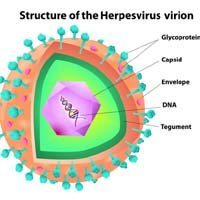Cells Talking in the Tumor Microenvironment: Cracking the Code
 The tumor microenvironment and stroma cells affect the progression and treatment of malignant pleural mesothelioma. A new study shows how cells support the malignancy of mesothelioma and potential therapies.
The tumor microenvironment and stroma cells affect the progression and treatment of malignant pleural mesothelioma. A new study shows how cells support the malignancy of mesothelioma and potential therapies.
Malignant pleural mesothelioma has a unique and complex tumor microenvironment.
A new study recently showed that the tumor microenvironment plays a key role in cancer initiation and progression. Scientists are seeking to understand how cancer and non-cancer cells communicate.
Cancer and Non-Cancer Cells Talk to Each Other
When white blood cells do not filter out asbestos fibers, other cells in the body are able to begin growing cancerous mesothelial cells.
Scientists are seeking to understand how cancer and non-cancer cells communicate in the body.
Non-cancer cells include immune cells and stromal cells. Cancer cells include tumor cells and cancer stem cells. Both are assumed to be involved in the progression of malignant pleural mesothelioma.
Malignant pleural mesothelioma is the main cancer covering the tumor microenvironment. A lack of understanding of these cells compromises the quality of life and the prognosis of pleural mesothelioma patients.
How Cancer Cells Escape the Immune System Defenses
Cancer growth in the tumor microenvironment depends on cancer cells activity. And also on the interaction between non-cancer cells that collaborate to support the tumor progression.
Non-cancer cells include immune cells and stromal cells. Stromal cells connect and support the mesothelioma tissue that surrounds other tissues and organs. They play an important role in supporting tumor growth and invasion.
According to Italian scientist Francesca Cersosimo from the University of Siena, “The interconnection between tumor cells and the surrounding stromal and immune component is necessary to create a permissive environment for cancer growth, immune escape and invasiveness.”
The communication and interaction between cells can create an open environment. This allows cancer cells to escape immune defensive mechanisms. Mesothelioma tumors often have a lower amount of immune cells and a higher amount of stromal cells. These cells directly connect to the mesothelioma tissue.
The role of immune and stromal cells has only recently attracted the interest of mesothelioma researchers.
Using the Tumor Microenvironment in Clinical Diagnosis and Treatment of Mesothelioma
The tumor microenvironment is unique and difficult to understand. It affects the progression of mesothelioma. Scientists who study the tumor microenvironment must understand the complex immune landscape.
A recent study provides new data on key cell players and their close connections. But, many questions related to their importance are still open. The tumor microenvironment may have answers for the diagnosis and treatment of mesothelioma.
Scientists can create more targeted anti-cancer therapies if they know how cancer and non-cancer cells talk to one another.
Future mesothelioma research may provide tumor microenvironment-based therapeutics. These newer therapies may be able to overcome the poor survival of malignant pleural mesothelioma patients.
Sources:
Cersosimo, F., Barbarino, M., Lonardi, S., Vermi, W., Giordano, A., Bellan, C., & Giurisato, E. (2021). Mesothelioma Malignancy and the Microenvironment: Molecular Mechanisms. Cancers, 13(22), 5664.





